When fall arrives, things usually start winding down in the garden – but it doesn't have to be that way. There are plenty of flowers you can plant in autumn that'll add color and life just when you need it most.
In this article, I'll cover 20 flowers that grow well in cooler weather, giving your yard bright colors, attracting helpful insects, and making your outdoor space inviting even as the days get shorter.
I’ll walk you through how to plant each one and what you need to know to keep them thriving. Gardening doesn’t have to be complicated – especially not in the fall.
Let’s get started.
1. Chrysanthemums

Chrysanthemums, or simply “mums,” are probably the first flowers people think of when it comes to fall gardens.
They bloom in various colors like yellow, red, orange, purple, and white, making your yard vibrant throughout autumn. Planting mums is easy – just pick a spot with plenty of sun and well-drained soil.
Water them regularly, especially in the beginning, and add mulch to protect their roots when it gets colder.
The great thing about mums is that they're hardy and low-maintenance, making them perfect if you don't want to fuss too much in the garden.
2. Asters

Asters are a favorite among gardeners because they're colorful, hardy, and bloom at a time when other flowers fade.
These cheerful flowers, often purple, pink, white, or blue, attract pollinators like bees and butterflies, giving your garden some extra life in the fall.
Plant asters in an area with full sun and soil that drains well. Water them regularly but don't let them get soggy. Prune them lightly to keep the blooms coming, and you'll have bright colors all the way until frost.
3. Pansies

Pansies may look delicate, but they're actually tough enough to handle chilly fall weather.
Available in a wide range of colors, pansies are excellent for brightening garden beds, containers, or window boxes.
They're best planted in a spot with partial to full sun, in soil that's rich and drains well. Keep the soil moist but not waterlogged, and pinch off faded blooms to encourage new growth.
With minimal effort, pansies can keep your garden looking fresh even as temperatures drop.
4. Black-eyed Susans
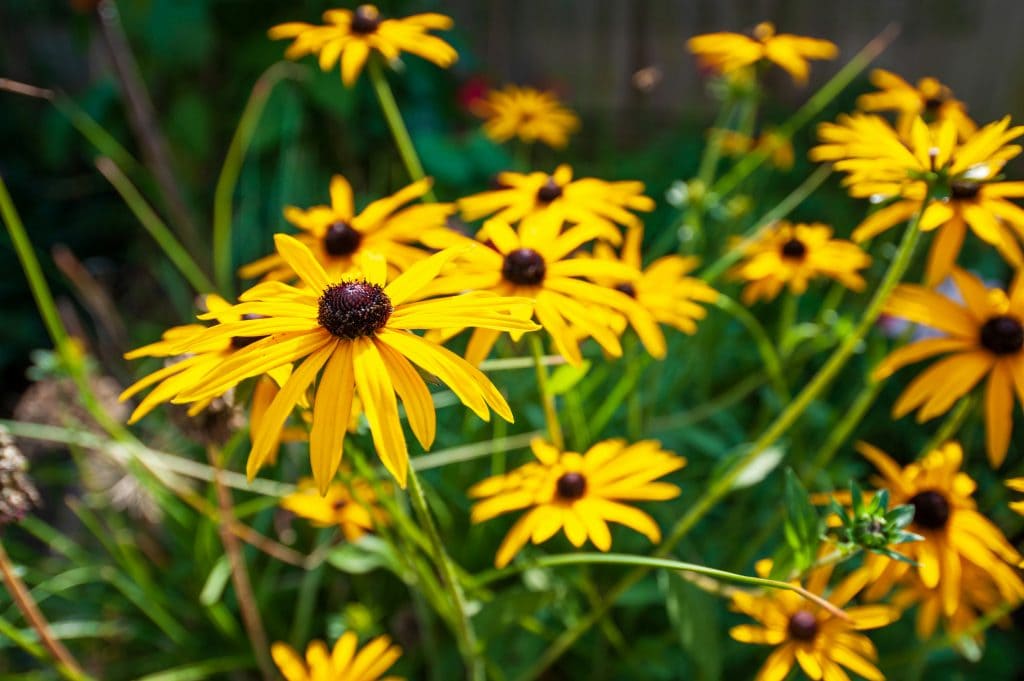
Black-eyed Susans are bright, cheerful flowers that stand out in any fall garden. With their yellow or gold petals and dark centers, they bloom reliably through late summer and into autumn.
Plant them in a sunny spot where the soil drains easily. They're drought-tolerant, so you don't have to water often once they're established.
Plus, these flowers attract butterflies, bees, and even birds, bringing a lively atmosphere to your backyard.
5. Sedum (Stonecrop)
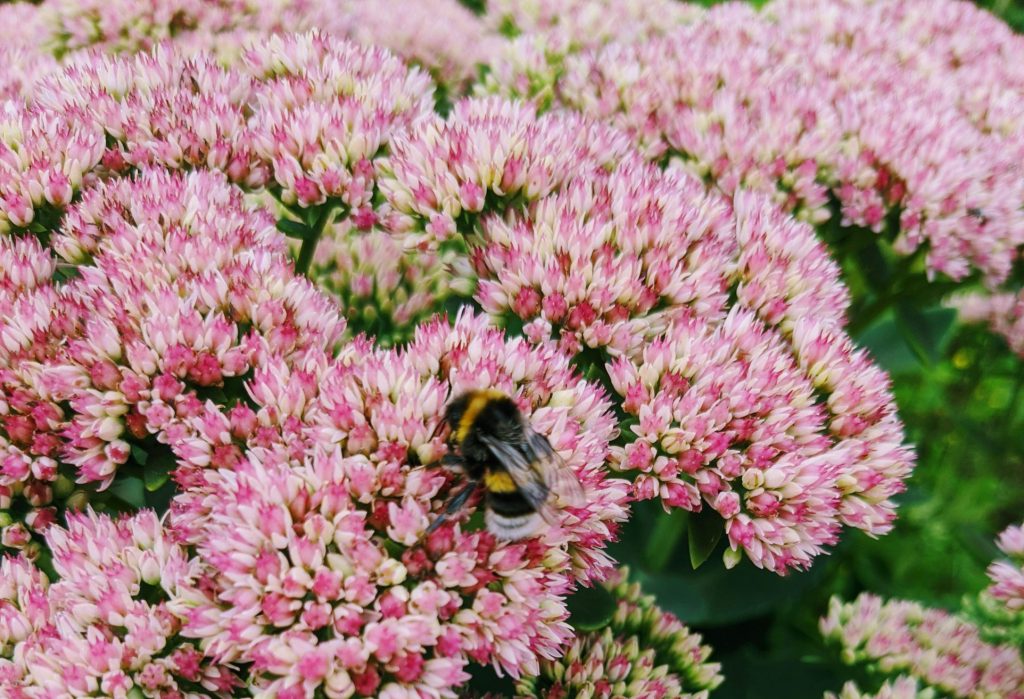
Sedum, also called Stonecrop, is one of the easiest plants you'll ever grow. Its clusters of star-shaped blooms usually start green or white in summer and turn shades of pink, red, or copper in fall.
This plant does best in full sun and well-draining soil, and it's perfect if you're looking for something low-maintenance. Sedum is drought-resistant, meaning it hardly needs water once it's settled.
It's a reliable choice for adding color without extra work.
6. Ornamental Kale and Cabbage
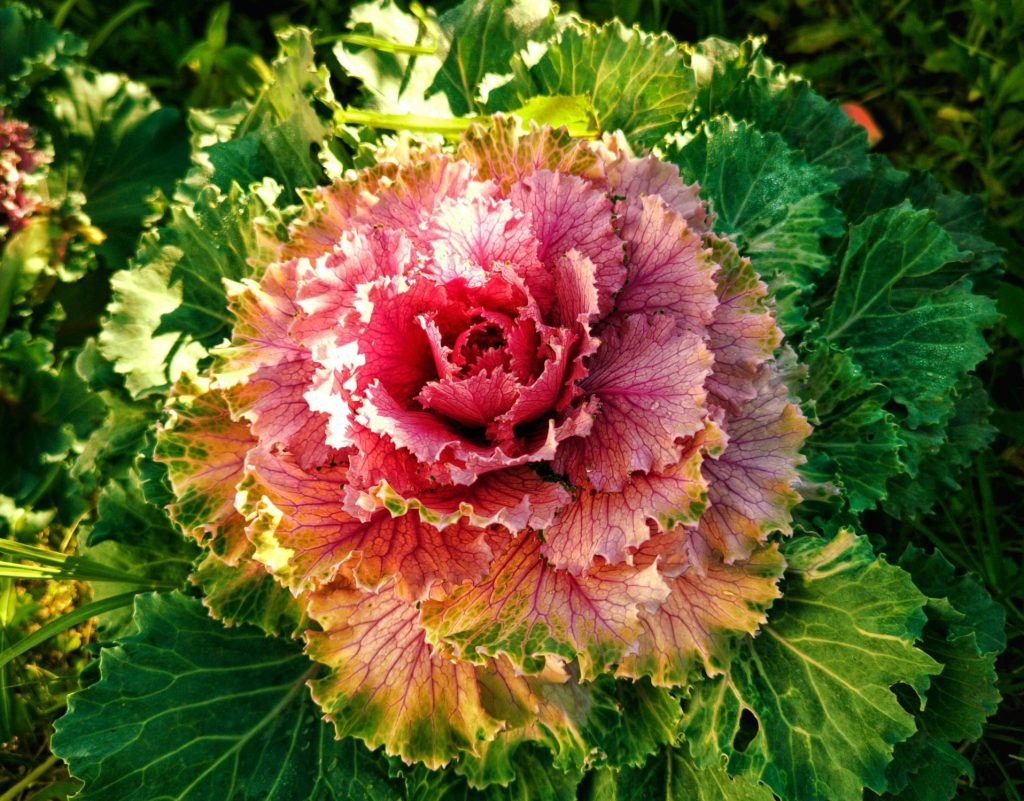
Ornamental kale and cabbage aren't typical flowers, but their brightly colored leaves look just as beautiful as blooms.
These cool-season plants thrive in chilly weather, turning shades of purple, pink, white, or green as temperatures drop.
To grow them, pick a spot with sun or partial shade, and plant in moist but well-drained soil. They don't need much care – just water them occasionally and remove any damaged leaves.
They're great for borders or containers, and they keep gardens interesting even after the first frost.
7. Helenium (Sneezeweed)

Helenium, commonly called sneezeweed, blooms just when other flowers begin fading, making it a valuable addition to any fall garden.
With warm-colored flowers ranging from yellow to deep red, helenium brightens your yard and attracts butterflies. Plant helenium in full sun and soil that drains easily.
It's important to keep the soil slightly moist but not overly wet. Deadhead faded blooms to encourage fresh flowers throughout autumn.
8. Goldenrod

Goldenrod is sometimes misunderstood – it gets blamed for fall allergies, but the real culprit is usually ragweed.
This plant actually benefits gardens by attracting pollinators, including bees and butterflies. Goldenrod's bright yellow flower clusters appear late in summer and continue through fall.
Plant it in full sun with average, well-drained soil. It's very easy to care for – once established, it handles drought well and requires minimal attention.
9. Japanese Anemone
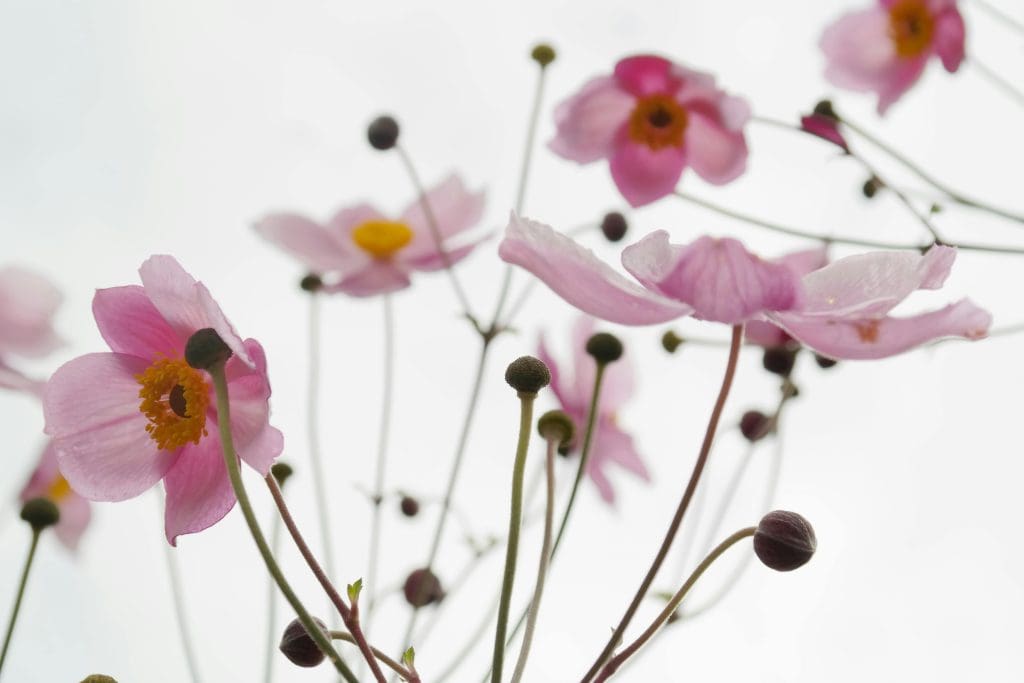
Japanese Anemones add a graceful touch to your fall garden. Their soft, elegant blooms come in shades of pink or white and gently sway on tall stems in the autumn breeze.
These flowers prefer partial shade and well-drained, slightly moist soil. They're mostly carefree once established, needing only occasional watering during dry spells.
Japanese Anemones are perfect for gardens where you want beauty without lots of upkeep.
10. Celosia

Celosia flowers add texture and vibrant color to gardens in the fall, standing out with their distinctive shapes and bright blooms.
They're typically seen in shades of red, orange, pink, and yellow. Celosia loves sunlight, so choose a sunny spot with well-drained soil. Water them regularly, but don't soak the soil.
These flowers are ideal if you want something eye-catching and low-maintenance in your autumn garden.
11. Autumn Crocus (Colchicum)

Autumn Crocus, also known as Colchicum, brings delicate, tulip-like blooms that appear as a pleasant surprise in fall.
They bloom in pink, purple, or white and add a splash of color when many other flowers are finished. Plant them in a sunny or partially shady area with well-draining soil.
These bulbs should be planted in late summer for fall blooms. They're extremely low-maintenance and require little watering, making them perfect if you're short on gardening time.
12. Dahlias
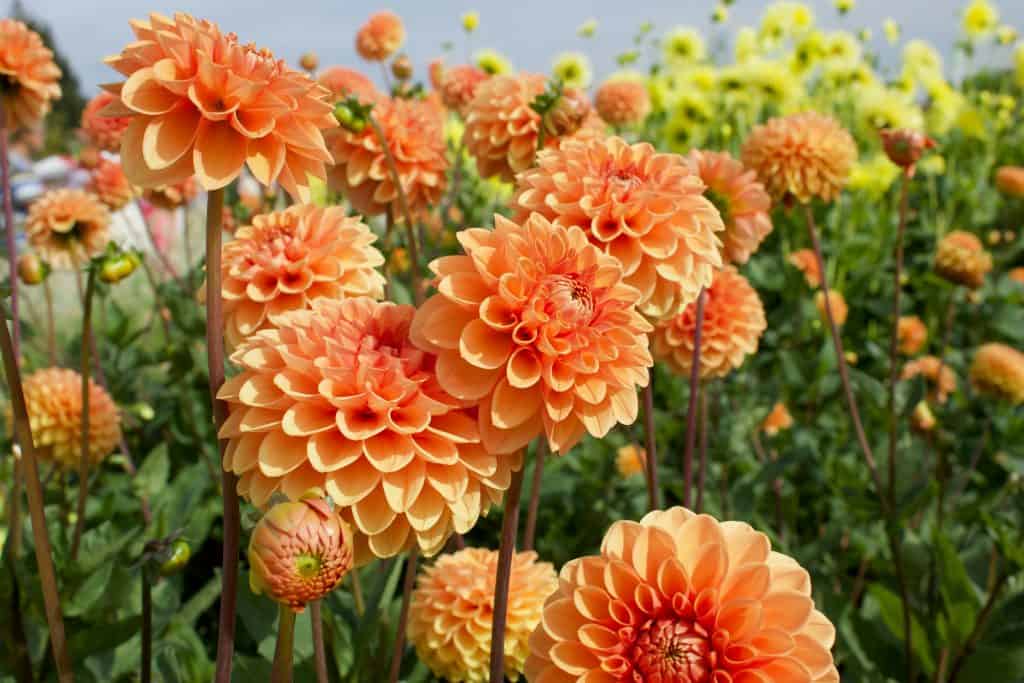
Dahlias offer bold, beautiful blooms in a variety of shapes, sizes, and colors – from deep reds and oranges to delicate pinks and whites.
They bloom from late summer until frost, making them perfect for keeping your garden lively during autumn. Plant dahlias in a sunny area with rich, well-drained soil.
Water regularly but avoid overwatering. Stake taller varieties to support their heavy blooms. With just a little care, dahlias will reward you with vibrant flowers throughout the fall.
13. Russian Sage

Russian sage is a tough, drought-tolerant plant known for its silvery foliage and small purple-blue flowers. It blooms from late summer through autumn and looks good even after the flowers fade.
Choose a sunny spot with sandy or well-draining soil. You won’t need to water often – Russian sage thrives in dry conditions.
It’s an excellent choice if you want a low-maintenance plant that brings color and attracts pollinators.
14. Coneflowers (Echinacea)

Coneflowers, or echinacea, offer sturdy, colorful blooms that last from late summer well into fall.
They're available in colors like purple, white, yellow, and orange, attracting butterflies and birds to your garden. Plant them in a sunny area with well-draining soil.
Water regularly until they're established, then occasionally during dry periods. These flowers are easy to grow, disease-resistant, and look great as cut flowers too.
15. Viola

Violas are charming, small flowers closely related to pansies but even tougher in cool weather.
With their delicate petals and bright colors (ranging from purple to yellow) they're perfect for fall pots, beds, or window boxes.
Plant violas in partial to full sun in moist but not soggy soil. Keep them watered regularly and remove old blooms to encourage continuous flowering.
Violas are ideal for adding long-lasting color and require minimal effort to thrive.
16. Marigolds

Marigolds are bright, cheerful flowers that bloom abundantly from summer into late fall.
Available in shades of orange, yellow, and red, they're easy to grow and even help keep pests away from your other plants. Plant marigolds in full sun and well-drained soil.
Water them moderately but regularly. Marigolds are perfect for gardeners who want vibrant color with minimal fuss, adding a splash of warmth to the autumn garden.
17. Blanket Flower (Gaillardia)
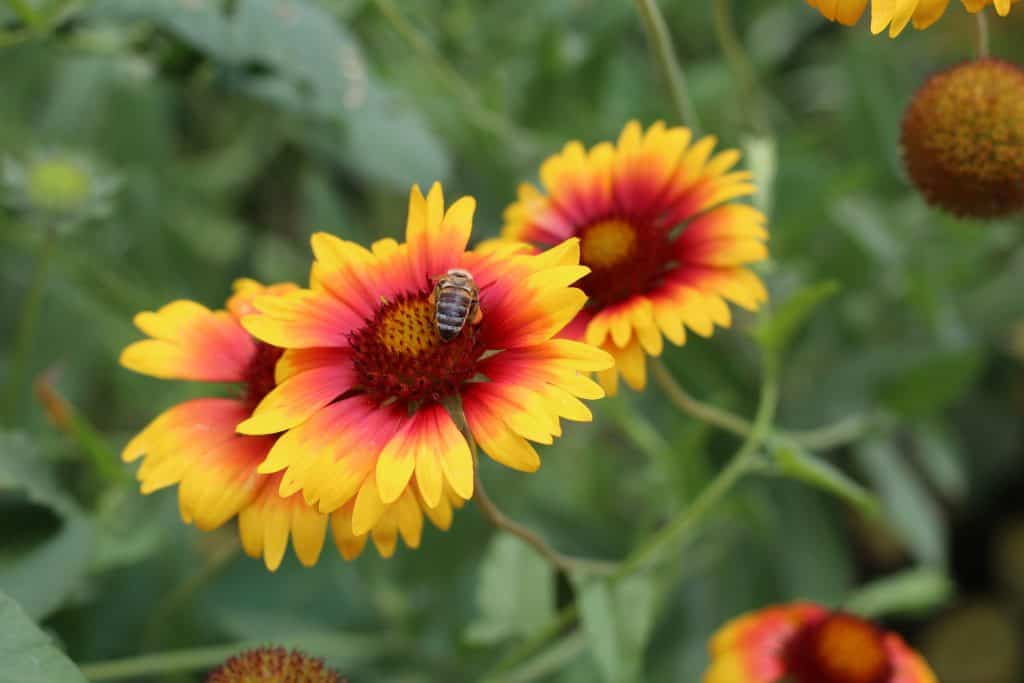
Blanket flowers (Gaillardia) are vibrant perennials known for their rich colors, usually red, orange, or yellow with striking patterns. They bloom well into fall and handle cooler weather with ease.
Plant them in full sun and sandy or loamy soil that drains quickly.
Blanket flowers require minimal watering and care once established, making them an excellent choice for busy gardeners who want long-lasting, reliable blooms.
18. Sweet Alyssum

Sweet Alyssum has tiny, fragrant blooms in white, purple, or pink shades. It's perfect for borders, rock gardens, or containers. Plant it in full sun to partial shade, in well-drained soil.
Sweet Alyssum attracts pollinators and is easy to care for, blooming steadily through autumn with minimal attention. You can trim it lightly if the blooms become leggy to encourage new growth.
It's particularly useful in containers, hanging baskets, or edging flowerbeds due to its cascading habit.
19. Snapdragons

Snapdragons offer colorful spikes of blooms in various shades, including white, yellow, pink, and red, that continue well into autumn. They prefer sunny spots with well-draining, fertile soil.
Regular watering and removing faded blooms help maintain continuous flowering. Snapdragons add vertical interest and vibrant colors to your garden during cooler months.
Protect them from strong winds, or stake tall varieties for support. They are popular as cut flowers, lasting a long time in indoor arrangements.
20. Calendula (Pot Marigold)

Calendula, also known as pot marigold, provides bright, cheerful blooms in shades of orange and yellow. It thrives in cooler weather, lasting through fall's early frosts.
Plant calendula in full sun or partial shade, and keep the soil moist but not soggy. It's easy to grow, requires minimal care, and can even be used in herbal preparations and cooking.
Calendula flowers are edible and commonly used in salads or teas. They can also help deter garden pests, making them a great companion plant for vegetables.
Start Planting Your Fall Garden Today
Planting fall flowers is one of the easiest ways to keep your garden colorful as summer ends and cooler weather moves in.
Choosing reliable blooms like chrysanthemums, asters, pansies, and marigolds can brighten up your yard without adding much extra work.
Follow the simple planting and care tips provided for each flower, and you'll have vibrant colors and life in your garden throughout autumn.
Don't wait – get started now to enjoy beautiful blooms all season long.
Frequently Asked Questions (FAQs)
1. What month should I plant fall flowers?
Fall flowers are usually planted between late August and early October, depending on your climate.
2. How can I maintain vibrant colors in fall blooms?
Regular watering, deadheading, and providing enough sunlight will keep your fall flowers vibrant.
3. Which fall flowers attract beneficial insects?
Black-eyed Susans, asters, goldenrod, and coneflowers attract beneficial insects like bees and butterflies.
4. Are fall flowers perennial or annual?
Many fall flowers, like mums, asters, and blanket flowers, are perennials, but others like pansies or marigolds are usually annuals.
5. What common mistakes should I avoid when planting fall flowers?
Avoid planting flowers in poor-draining soil, overwatering, or planting too late in the season.
Ready To Transform Your Garden?
Are you looking for the best way to layout your garden beds? Maybe you're feeling a bit stuck on how to make the most of your space?
We’ve got you covered! Check out our 101+ Garden Bed Layout Ideas for your next raised bed project. This guide is filled with creative and practical ideas that can help you design a garden that fits your style, whether you’re just starting out or have been gardening for years.
Get your copy today and get inspired to bring your gardening dreams to life.

